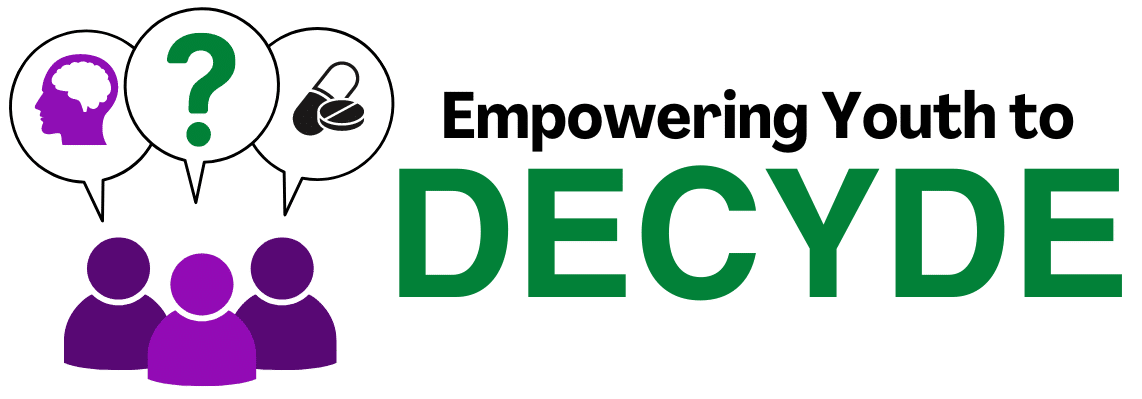HIGH SCHOOL: LESSON PLAN 2
Home » Teacher Portal » High School » High School: Lesson Plan 2
High School Lesson 2: Be Prepared: Understanding Harm, Safety, and Emergency Response
Students will learn about the effects of substances on overall health and well-being, harm reduction strategies and how to help others and themselves in an emergency. Students will also explore a case study on how different decisions lead to different outcomes, and how to make difficult decisions using the FACE Decision-Making Model.
This lesson is aligned with the following learning outcomes from the NL High School Health Curriculum:
Drug Education
- Identify and analyze the impact of substances on health and well-being.
- Apply harm reduction and prevention approaches to substance use in ways that support safety and well-being within the home, school, and community.
- Identify strategies for preventing and responding to substance-related emergencies.
- Develop an emergency response personal safety plan related to substance use.
- Demonstrate decision-making skills that support health and well-being and safer choices.
Emotional and Social Well-being
- Demonstrate knowledge, skills, and behaviours related to health-related decision making.
Technology and Communications
- Utilize information technology to access, present, and communicate information on substance use.
Environmental Health and Safety
- Demonstrate skills and behaviours which enhance personal safety, the safety of others, and the protection of the environment.
Learning Activities
The following activities are designed to support the delivery of this lesson and help reinforce key concepts. Some activities are available in multiple formats to offer flexibility and accommodate teacher or student preferences.
- Learning Activity 1: The Effect of Substance on Overall Health and Well-Being
- Infographics: Health and Wellness
Students and teachers may find it helpful to refer to the following infographic as they work through this learning activity.
- Introduction: Substance Use and Health True or False
In this activity, teachers will gauge students’ knowledge on the effects of different substances on health and wellness.
- Pre-Activity: Does Dose Matter?
Students will continue to learn about the health effects of substances by exploring the concept of lethal doses.
- Exploration Activity (Part 1): Substance Use and Health Situations
Students will be assigned different substance-use situations and will research the related health effects.
- Exploration Activity (Part 2): FACE Scenarios
Students will consider how their choices and decisions can affect their health and well-being, highlighting why thoughtful decision-making matters when it comes to substance use.
Scenario 3: Kai – Crossing the Line
Scenario 4: Xavier – The Cost of Saying No
Teacher Discussion Guide
- Infographics: FACE Decision-Making Model
Students and teachers may find it helpful to refer to the following infographics as they work through FACE Scenarios.
- Sharing and Reflection: Effects of Substance Use
Students will reflect on the effects of a chosen substance by considering its short- and long-term impacts on health, daily life, relationships, and goals.
- Learning Activity 2: Harm Reduction
- Infographics: Harm Reduction, Fentanyl & Fentanyl Analogs, Factors Affecting
Intoxication, Responding in Substance-Related Emergencies
Students may find it helpful to refer to the following infographics as they work through this learning activity.
- Introduction: Chocolate Chip Cookie Activity
This is an introductory activity to get students thinking about safe supply, drug testing, and harm reduction.
- Pre-Activity: Party Safer Jeopardy
In this Jeopardy-style game, students will answer questions on harm reduction, what to do in an emergency, factors affecting intoxication, personal boundaries, and decision-making.
- Exploration Activity (Part 1): Harm Reduction Myth Busters
Students will work collaboratively to research and “bust” common myths about harm reduction.
- Exploration Activity (Part 2): Harm Reduction Situations
Students will review several situations and brainstorm harm reduction strategies that could apply to each one.
- Sharing and Reflection: Harm Reduction Community Resource
Students will design a harm reduction tool or resource that could be used in their school or community.
- Learning Activity 3: How to Help Others and Self in an Emergency
- Infographics: Responding in Substance-Related Emergencies, Overconsumption, Naloxone
Students may find it helpful to refer to the following infographics as they work throughout this learning activity.
- Introduction: Responding to Emergencies True or False
This activity engages students while reinforcing key concepts about how to respond in substance-related emergencies.
- Pre-Activity: Emergency Response Stations
In this activity, students will explore 4 different emergency response stations: 1) Recognizing Overdose Symptoms, 2) Recovery Position Video Challenge, 3) Eva’s Story: Looking out for a Friend, and 4) Red Flag Challenge.
- Exploration Activity: Naloxone Training – Ready to Respond
In this exploration activity, students will continue to learn how to identify overdose symptoms, practice administering naloxone (hypothetically or with demo kits), and understand legal and emotional considerations during an emergency.
- Sharing and Reflection: Naloxone Training
Students will reflect on their naloxone training by considering whether naloxone kits should be widely available and accessible in schools.
- Learning Activity 4: Making Difficult Decisions
- Exploration Activity: FACE Case Study – Pax and Zara: Different Choices, Different Outcomes
In this case study activity, students will use the FACE model to explore the complexities of decision-making when worried about someone close to them, showing how different choices can lead to different outcomes.
Pax and Zara: Different Choices, Different Outcomes – Part 1
Pax and Zara: Different Choices, Different Outcomes – Part 2A
Pax and Zara: Different Choices, Different Outcomes – Part 2B
Pax and Zara: Different Choices, Different Outcomes – Part 2C
Pax and Zara Teacher Discussion Guide
- Sharing and Reflection: Student Party Safety Plan
Students will create a Party Safety Plan to apply what they’ve learned about harm reduction and emergency preparedness, helping them set boundaries, plan safe choices, and prepare for unexpected situations.
These resources may help support the delivery of the lesson plan and learning activities:
Educational Materials
The relevant Educational Materials for this lesson are referenced throughout the lesson plan; additional ones are available here.
Substance Snapshots
Relevant Substance Snapshots are noted in the lesson plan; more may be accessed here.


